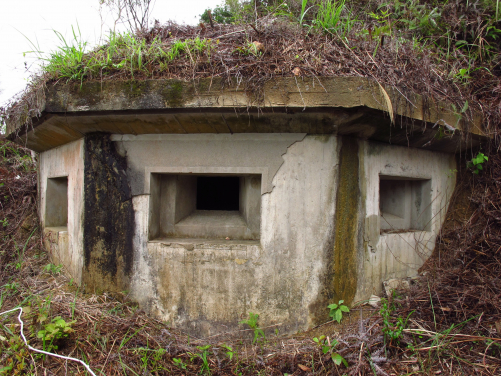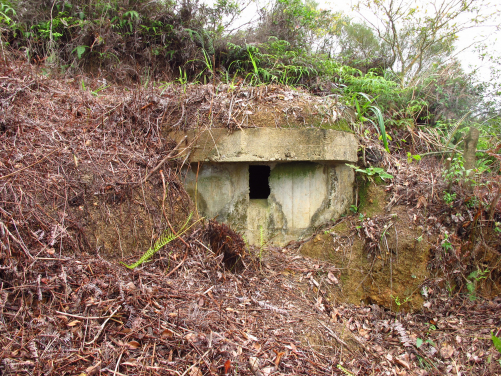Media
Japanese Defensive Relics in Hong Kong
Pillboxes on Luk Keng Knoll: War relics & heritage
07 Mar 2021
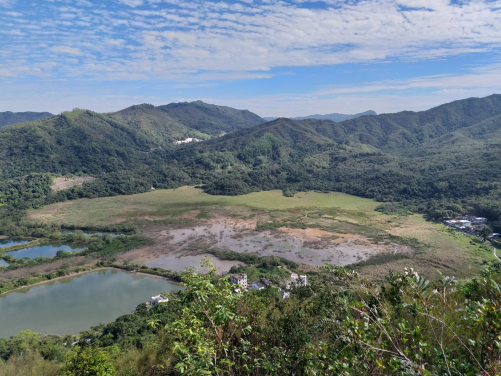
On a 120m knoll with a levelled summit, near Luk Keng, stand some 7 pillboxes connected by a system of communication trenches with, further downhill, at least 6 smaller satellite pillboxes that each can only accommodate 1 soldier. (photo credit: The University of Hong Kong)

The research team is led by Professor Lawrence Lai (middle) from the Department of Real Estate and Construction of the Faculty of Architecture, team member Dr Ken S.T. Ching, and President of the Hong Kong War History Association Mr Wu Junjie. (photo credit: The University of Hong Kong)
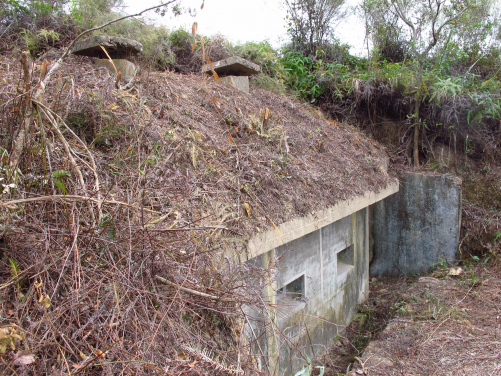
Pillbox PB7, which is believed to be used by the Japanese army as the site's command post (photo credit: The University of Hong Kong)
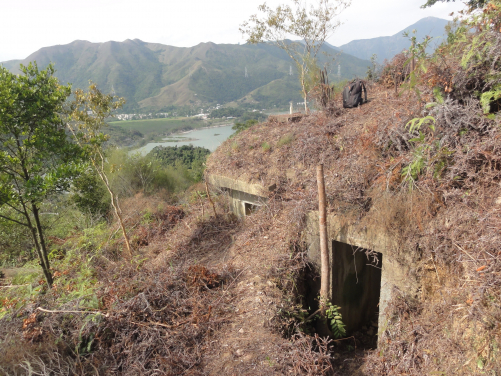
Pillbox PB6, looking over to the South Western side of the knoll (photo credit: The University of Hong Kong)
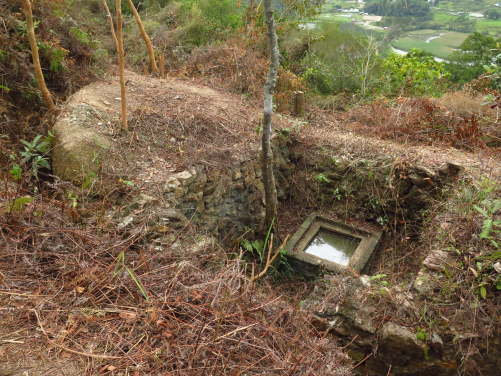
Inside a stone wall revetted enclosure, a 2-metre deep concrete shaft was constructed near a large rectangular pillbox close to the top of the knoll on the western side. Square in plan and with steel rungs for access on its southern side, its purpose has yet to be determined. Possible uses might have been water supply, field sanitation or some sort of shelter. (photo credit: The University of Hong Kong)
- 1 / 8
- 2 / 8
- 3 / 8
- 4 / 8
- 5 / 8
- 6 / 8
- 7 / 8
- 8 / 8
At present, the relics of World War II that the public usually come into contact with are left by the British, but in fact, the Japanese army had also built, using local labour, many defensive structures in Hong Kong. A research team led by Professor Lawrence Lai from the Department of Real Estate and Construction of the Faculty of Architecture at the University of Hong Kong (HKU) has spent over ten years identifying and locating the military constructions.
Among them, a large defensive complex in Luk Keng, New Territories, is still well-preserved. Based on its design and location, the large-scale pillbox and trench systems on a knoll in Luk Keng is believed to be built by the Japanese forces during the later stage of the occupation period and was aimed principally at suppressing the anti-Japanese activity and infiltration, instead of coping with an anticipated Allied landing in the Mirs Bay Area.
On 3 March 1943, a major confrontation reportedly broke out at Nan Chung village in the area between the Kempeitai and members of the Hong Kong and Kowloon branch of East River Column, the guerrilla force who harassed the Japanese throughout the occupation, resulting in casualties and arrests of Column members. It is believed that the Japanese Army started to build the defence system at Luk Keng after the incident to block traffic of the Column.
“On the 3 March 1943, the Japanese unleashed two companies of soldiers and over fifty heavily armed Kempeitai and marched into Nam Chung. Outgunned and outnumbered, eleven of the most senior cadres were killed and four others were captured.” (Adapted from East River Column: Hong Kong Guerrillas in the Second World War and After by the late Mr. Sui-jeung Chan (2009), P.77).
The Luk Keng site is one of the major clusters of Japanese fortifications in the Northeastern New Territories, including Sha Tau Kok, Sai Kung and Luk Keng itself. Through studies one can come to a better understanding of the significance of the local resistance, forcing the Japanese troops to spend huge resources and press local inhabitants to take part in the construction.
Ascertained by the Research Team, the Luk Keng Pillboxes, though once were blocked by dense vegetation, presented themselves as one of the well-preserved defensive installations by Japanese, and unquestionably have positive heritage value. The cluster is also located within a Country park with good road access nearby, parking and catering facilities. The Research Team hopes that the authority pays more attention to preserve the military relics during the Battle of Hong Kong and Japanese Occupation period as important educational and tourist resources.
Research team members include Prof. Lawrence W. C. Lai, Hon. Prof. Stephen N. G. Davies, Prof. Daniel C. W. Ho, Mr. Y. K. Tan, Dr. Mark Hansley Chua, Dr. Ken S. T. Ching, Mr. Stephen Y. H. Yip, the late Mr. L. M. Cheung, Mr. Nixon T. H. Leung and Mr. Vincent N. H. Chan. With the aid of aerial photos and on-site inspection, they studied the situation of other relics in areas including Sha Tau Kok (Pak Fu Shan, Pak Kung Ngau, Shan Tsui, Wu Shek Kok) and Sai Kung (Wong Chuk Yeung).
Click here for a short documentary video of the Luk Keng project.
For media enquiries, please contact:
Communication and Public Affairs Office, HKU
Melanie Wan (Tel: 2859 2600 / Email: melwkwan@hku.hk)

